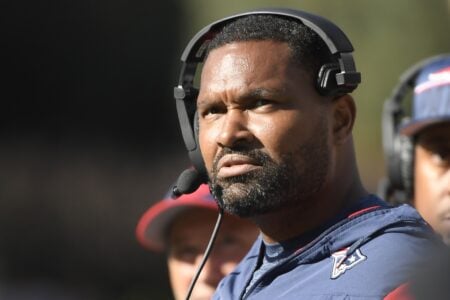Baldinger has a nice all-22 excerpt and commentary on a Brendin Cooks comeback route against the Dolphins, where Brady throughs while Cooks's back is still turned:
I have a question about this and similar routes. Here the receiver runs out 16 yards from the line of scrimmage, then comes back two yards to catch the ball 14 yards from the line of scrimmage.
Does the receiver here actually figure out where 14 yards is from the LOS? Isn't that a bit nontrivial if, say, it's an audible or no-huddle situation, and the ball is on the other side of midfield at some fractional yardage? I am quite sure I couldn't quickly and accurately do that kind of arithmetic consistently in a game situation. Remember even Jim Lovell needed a check on his arithmetic and he had more time. Or does he count paces? But if he counts paces, isn't the distance different depending on how he is guarded?
I have a question about this and similar routes. Here the receiver runs out 16 yards from the line of scrimmage, then comes back two yards to catch the ball 14 yards from the line of scrimmage.
Does the receiver here actually figure out where 14 yards is from the LOS? Isn't that a bit nontrivial if, say, it's an audible or no-huddle situation, and the ball is on the other side of midfield at some fractional yardage? I am quite sure I couldn't quickly and accurately do that kind of arithmetic consistently in a game situation. Remember even Jim Lovell needed a check on his arithmetic and he had more time. Or does he count paces? But if he counts paces, isn't the distance different depending on how he is guarded?
Last edited:


















